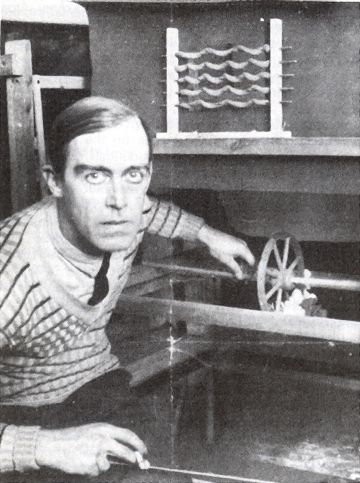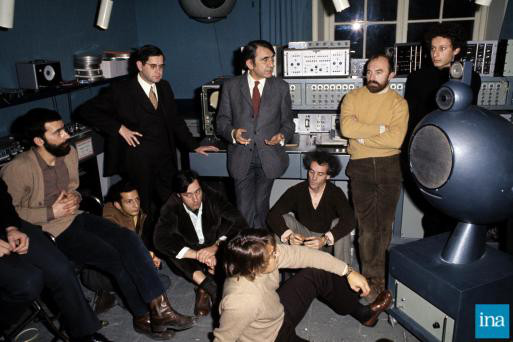WINDOW TO THE OUTSIDE
Text: Carlos Sanchez.
The landscape is not the place; it is not even exactly in its place. It always takes at least two places for there to be landscape. A landscape is a drama, it has to be done. It is a representation in space. And a space, as it says Michel de Certeauis "a practiced place". There is always another place in the place. One does not immerse oneself in a landscape without, at the same time, immersing oneself in oneself, and vice versa. That is why landscapes are full of faces and faces are full of landscapes. In a way, landscapes are maps of meaning. Even natural, they have been traced, produced, discriminated. This is particularly evident in the case of soundscapes, a concept coined by Raimond Murray Schafer to designate, within the field of acoustic ecology, its own object of study, and that "consists of heard events and not seen objects".. Schafer associated it with another concept, that of "clairaudience" or clear hearing, and that "refers to exceptional listening skills, particularly in relation to ambient or environmental sounds.".

Again, and for the same reasons we said that the landscape is not the place, the soundscape is not the environment. It does not immediately present itself to us as landscape without the intervention of a subject that listens and "whose listening skills can be trained to reach a state of clairaudience.". There are still faces everywhere. Before Schafer, soundscaping had already been, at least, sketched at the dawn of radiophony and in interrelation with other arts such as cinematography, giving rise to experimentations such as Week-End, by the German filmmaker Walter Ruttmannwho took advantage of the technical possibilities offered by optical sound, that is, the process of recording audio directly on photographic film, to make a film without images and composed only of a series of previously shot sound fragments whose juxtaposition reflected, described, from a logic clearly imported from that which articulates the cinematographic montage, the transition from a working day to a holiday. Around the same time, the Italian futurist Filippo Tommaso MarinettiFrom a much more conceptual than descriptive approach, he proposes, in one of his Futurist Radiophonic Syntheses, precisely entitled Un paesaggio udito, a sort of block of reality with its own entity and built from different sound fragments organized according to their content (the whistling of a jealous blackbird, the crackling of fire, splashing in the water), but also according to their duration. A decade later, Pierre Schaefferfather of the so-called "concrete music".will be proposed both for the elucidation of a "solfeggio of sound objects".The recognition that such objects would constitute abstract realities with respect to the "sound bodies" that would have generated them; that is, that such objects, isolated from their relative significance and taken in their own substance, their materiality, their difference, are susceptible, by means of repetition, to be considered as elements of a musical composition.
However, if Schaeffer The aesthetic dimension of sound objects, as elements of a composition, is provided by the SchaferThe new project is the result of an ecological ethic marked by the recovery of the natural and urban environment.
From then on, the so-called soundscapes have been developing according to different trends more or less distant from the original assumptions of SchaferIt is situated between acousmatic composition and artistic reportage or documentary. Thus, to the use of tape recorders and acoustic spectrographs with which to discriminate, record, measure and, finally, to "tidying up the environment". The sound bridge between natural or urban environments, operated with the help of new resources, such as the use of telephone lines or telecommunication satellites, will make possible the mixing of recorded signals with others broadcast live and experimentations such as those carried out by the American Bill Fontana who, for example, in Puente sonoro Colonia-San Francisco (1987), offered, in addition to a radiophonic and therefore delocalized work, a "sound sculpture" in a square in the center of Cologne. Other initiatives, such as those carried out by the group Ars Acústicahave taken advantage of the resources provided by the Internet to develop projects with the aim of constructing "an entirely virtual city in cyberspace".The sound mutations that can be produced by the interaction of Internet users.

As for the proposals that hybridize with elements of reportage or documentaries, and that often incorporate verbal sound objects, thus placing the soundscape in the orbit of the New Hörspiel, it can be said that they have been developing since the seventies of the last century by authors such as Pierre Henry or the Gropue de Recherches Musicales (GRM), in the form of bands, portraits or sound postcards linked to certain natural and urban eternities. Quite different is the tendency represented by the Spaniard Francisco López, who, starting from a synthesis of the acoustic environment, electronically treats the extracted sound elements, mixing and juxtaposing them in such a way that they end up losing, for the benefit of the composition, all reference to the environment from which they came. Thus, the soundscapes of LópezThe clearly compounded, clearly compounded, move away from the conservative approach present in the ecological budgets of Schafer. Now, what soundscape has not been composed, since, apart from the filter of technology, a landscape is something that always has to be produced.
There is always mediation. There is always a filter; that of technology, yes, but also that which is conditioned by the intention and attitude of the landscape artist. Even when one sets out to capture the sounds of the environment without the use of technology, what one captures is captured through the intricate labyrinth of the ear, not to mention the labyrinth of the brain. There is always exploration, purpose, discrimination, selection, even hierarchies. There is always mixing, juxtaposition and assembly, according to such and such more or less personal criteria. As we said at the beginning, one does not immerse oneself in a landscape without, at the same time, immersing oneself in oneself, and vice versa. There is always creation.
The Ventana al Exterior blocks aim to bring us closer to a place through the soundscape, intervened or not, with names such as Ruth Anderson, Carlos Suárez or Atilio Doreste.
Sound selection: Ishak Benavides.